Could this 120g fluffball save a critically endangered species? Adorable footage shows tiny ‘dancing lemur’ clinging to its mum after being born at Chester Zoo
Animal lovers will be dancing for joy at the birth of this rare baby lemur at Chester Zoo.
Adorable photos of a bright-eyed baby Sifaka Cockerel lemur show it clinging tightly to its mother's fur as she hops from tree to tree.
Chester Zoo is currently the only zoo in the UK, and one of only three in Europe, to care for the Cockerel's sifaka in an attempt to prevent their extinction.
This species of primate, originally from Africa, is critically endangered and has been nicknamed the “dancing lemur” because of its distinctive sideways gallop.
Their jumping motion allows them to cross long distances while using only minimal energy.
This endangered 'dancing' lemur was born at Chester Zoo. The little new arrival was born to parents after a five-month pregnancy
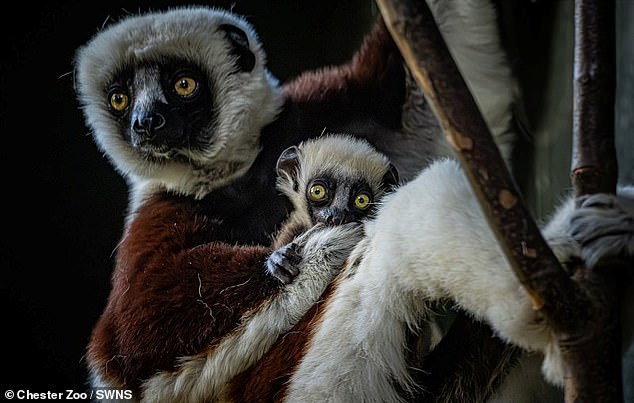
This is the second child born to parents Beatrice, 11 (pictured) and Elliot, 10. The zoo's primate experts say the baby will begin to branch out and explore on its own at about three months old, which is when it will reveal itself. If it is male or female
The zoo's primate experts say the baby will begin branching out and exploring on its own at about three months old, which is when it will reveal whether it is male or female.
The baby will be a huge boost for the species, says Dr Nick Davies, a primatologist at Chester Zoo, who was born to parents Beatrice, 11, and Elliot, 10.
“The new access to the conservation breeding program is a huge boost for this species,” says Dr. Davis.
“The cub will join only five other Coquerel sifakas living in zoos across Europe, so each addition is very special,” he adds.
“The new baby was born with a thick white coat, just like his parents, and is already wide-eyed and full of personality.
“Mother Beatrice is very busy with her cheerful arrival that feeds her regularly, and has so far shown great signs of development.”
The baby, born on September 21, represents the latest success of the conservation education programme.
In the past 30 years, the wild population of the cockerel's sifaka lemur has declined by 80 percent due to widespread habitat loss on the island of Madagascar.
As a result, this species is classified as critically endangered by the International Union for Conservation of Nature.
'These unique primates are only found in one place on Earth – the north-western forests of Madagascar,' says Mike Jordan, director of fauna and flora at Chester Zoo.
“Unfortunately, their population is in sharp decline, and their habitats are becoming increasingly fragmented with more than 90 percent of the island’s forests having been cleared to make way for agriculture and human activities.”
Mr. Jordan adds that the zoo is working with NGOs in Madagascar to develop an area of protected forest of more than 100 square miles.
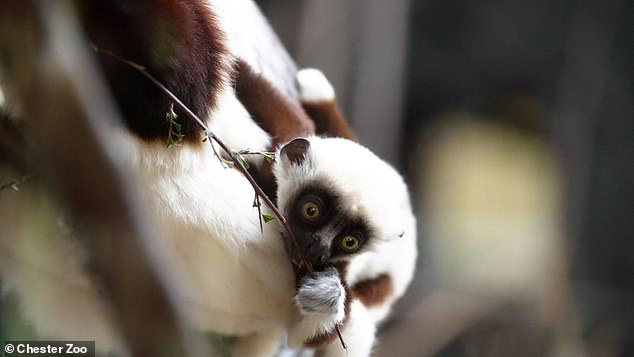
Chester is now the only zoo in the UK and the only one of three in Europe to care for these rare creatures
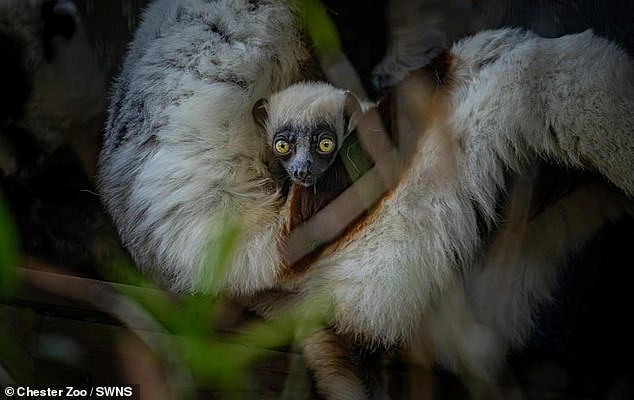
Zookeepers will not be able to determine the baby's sex until three months later when it stops clinging to its mother
“We hope that the work here at Zoo UK, as part of coordinated efforts with other European zoos, combined with our efforts in Madagascar to protect forests, will ensure that species like the Coquerel's sifaka can thrive for many generations.” Add.
In its native habitat, the cockerel's sifaka lemur can reach a length of 18 inches (46 cm), while its tail alone is another 18 inches long.
This tail helps them maintain their balance while jumping 20 to 30 feet (6-9 m) through trees.
However, on land, their very short front legs make it impossible to run on all fours, so use their unique dancing bounce.
Unique among lemurs, this gait is thought to allow them to cross long distances while using only minimal energy.
It is believed that by placing one leg in front of the other, the momentum generated by the landing can help generate some energy for the next take-off.
Sifakas have distinctive vocal calls that they use to ward off predators and locate each other, and they have a scent gland in their throat that they rub along branches to mark their way and attract mates.
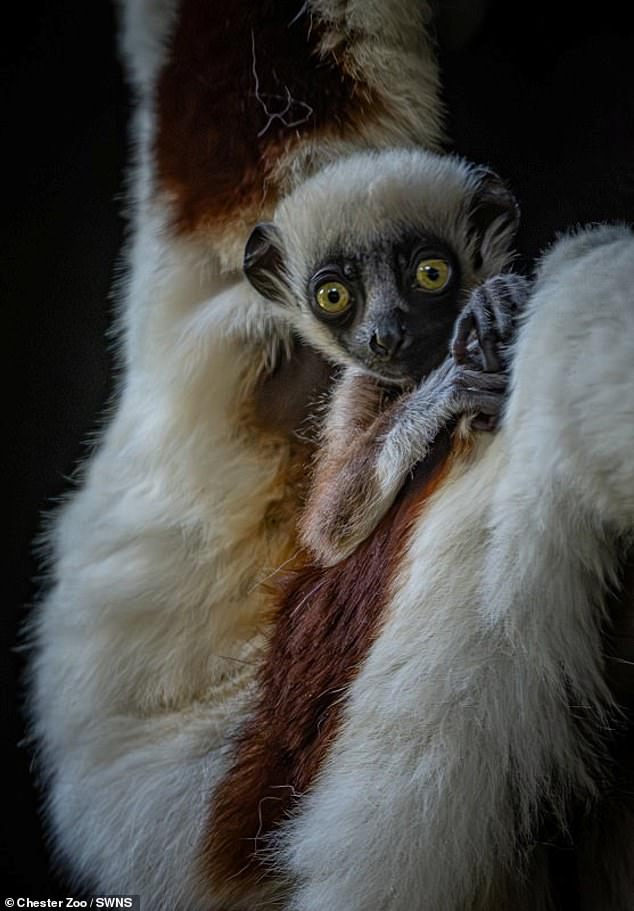
Cockerel's sifaka lemurs are critically endangered with their wild population declining by 80 percent in the past 30 years.
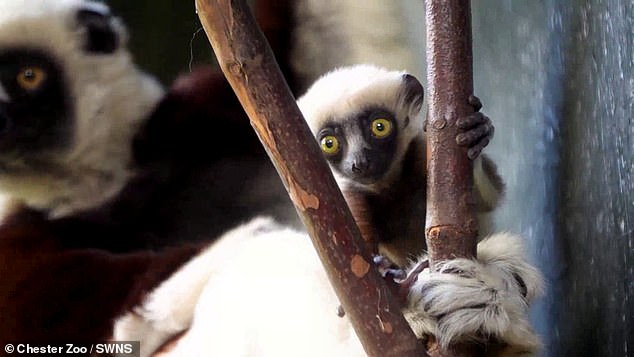
The main reason for their decline was deforestation in their native Madagascar
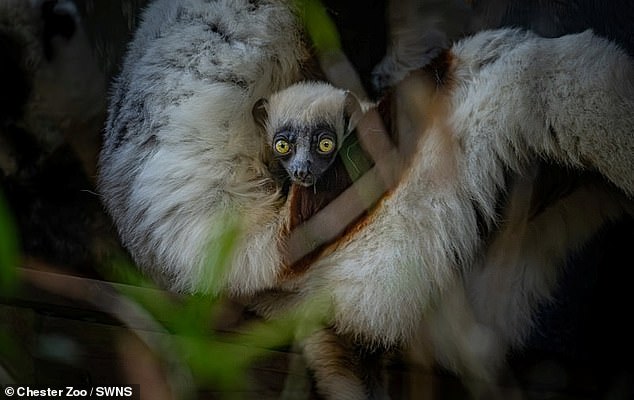
The new, small piece weighed 120 grams, which is about the same as a medium-sized tomato
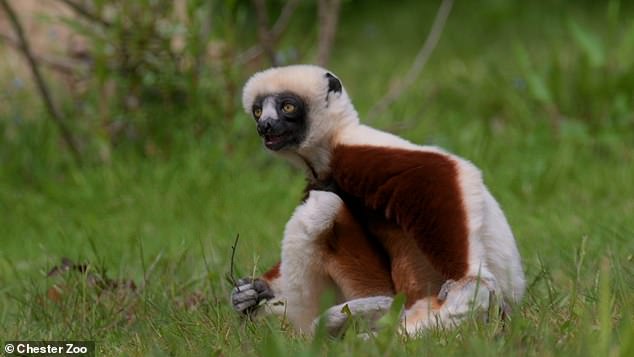
The cockerel's sifaka lemur is known for its distinctive dancing leaps that it uses to move on land
This latest release to the family follows the first birth of a Coquerel sifaka in Europe at Chester Zoo a year ago.
The 4 oz (119 g) baby lemur was born to Beatrice and Elliot, but unfortunately died at the age of 2 1/2 months due to an underlying health condition.
Before her birth, the Coquerel sifaka had not been bred successfully in captivity in Europe.
With the latest release to the family, the zoo is once again home to three of these critically endangered animals.
(Tags for translation) Daily Mail
